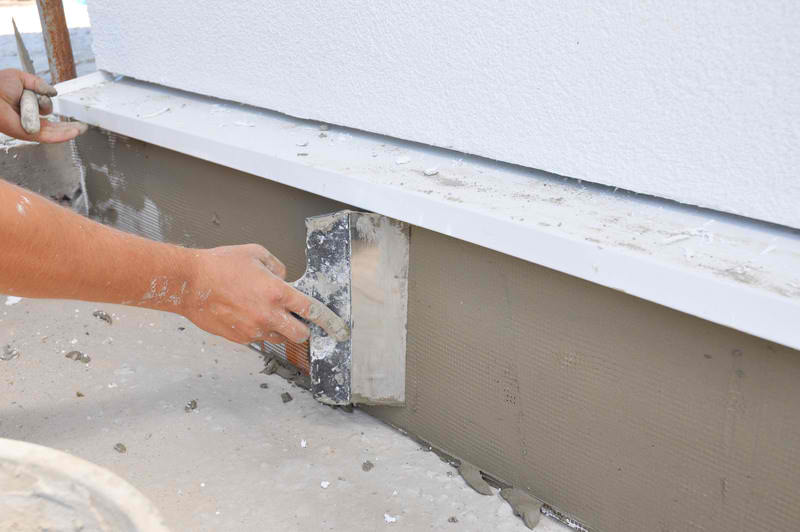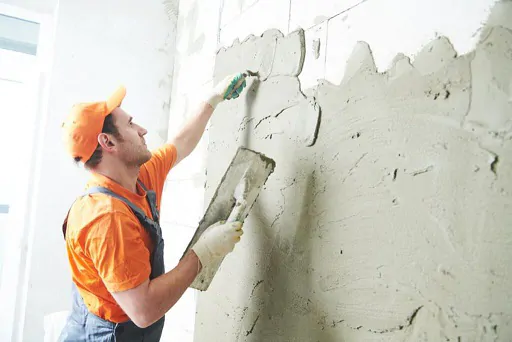Discovering the Adaptability of Stucco in Modern Architecture
Stucco has actually long been recognized for its aesthetic appeal and versatility, yet its duty in modern-day design warrants a better exam. This material, historically significant in different building activities, now functions as a versatile solution that improves both the practical and aesthetic facets of contemporary structures. By exploring its cutting-edge applications, from striking exteriors to energy-efficient layouts, one can appreciate how stucco is redefining the borders of building expression. This discussion will discover not only its transformative possibility however also the difficulties it faces in a progressing sector.
Historic Relevance of Stucco
The historic significance of stucco is extensive, as it has actually played a pivotal function in building practices across different cultures for centuries. Coming from ancient worlds, stucco was used by the Egyptians and Greeks as a functional and sturdy coating for both exterior and interior surfaces. Its flexibility to various environments and capability to imitate more costly materials made it a favored option.
In the Roman age, stucco became a key attractive aspect, utilized extensively in public structures, rental properties, and temples. The Romans refined the application methods, permitting intricate designs and relief sculptures. During the Renaissance, stucco experienced a resurgence, particularly in Italy, where it was used in decorative details and sophisticated facades, showcasing the creativity of the duration.

Modern Applications in Design
Stucco has located renewed importance in modern-day design because of its convenience and aesthetic charm (stucco contractor). This standard product is increasingly used in contemporary style, linking the void between timeless and contemporary aesthetic appeals. Developers and engineers appreciate stucco for its adaptability, enabling it to be applied in numerous designs-- from minimalist structures to clarify Mediterranean designs
In household tasks, stucco offers a tidy, smooth finish that boosts the visual cohesion of facades. Its ability to adapt different forms and surfaces makes it a suitable option for both brand-new constructions and improvement jobs. In addition, stucco's toughness and low upkeep needs contribute to its growing popularity in city settings, where durable products are important.
Industrial applications have likewise welcomed stucco, with many organizations selecting this material to create inviting and unique storefronts. Using stucco in public structures, such as colleges and recreation center, showcases its capacity for developing aesthetically attractive atmospheres while giving outstanding insulation homes.
Color and Appearance Advancements
Discovering shade and appearance developments in stucco has opened brand-new avenues for architects and developers, boosting the product's aesthetic effect in modern building and construction. Recent innovations in pigment modern technology have actually permitted for a broader range of shades, making it possible for designers to develop striking facades that integrate seamlessly with their environments or stand out as vibrant building statements. This versatility in color option supplies engineers the capability to evoke specific psychological actions and balance with local appearances.
Appearance developments have similarly transformed stucco applications. Techniques such as shoveling, spraying, and marking have brought about varied surface area finishes, ranging from smooth and improved to responsive and tough. These variants not just add to the building's character yet likewise play a vital role in light interaction, improving the aesthetic depth and dimensionality of surfaces.
In addition, the introduction of synthetic stucco alternatives has broadened style opportunities, supplying improved resilience and weather resistance while keeping aesthetic allure. As architects proceed to explore cutting-edge color combinations click resources and distinctive coatings, stucco remains a pivotal element in modern-day style, showcasing the product's versatility and timeless importance in contemporary design.
Sustainability and Power Efficiency
Advancements in shade and texture have not only boosted the aesthetic allure of stucco but additionally led the way for better concentrate on sustainability and energy efficiency in modern-day architecture. As ecological problems become increasingly popular, the building sector is turning its attention to products that add positively to environmental balance.
Stucco, composed mostly of natural materials such as lime, concrete, and sand, supplies a lasting alternative to more resource-intensive building products. Its long life and durability reduce the demand for regular substitutes, consequently minimizing waste and source intake gradually. Contemporary stucco formulas often consist of energy-efficient ingredients that improve insulation residential or commercial properties, minimizing home heating and air conditioning prices for buildings.
The reflective top qualities of stucco can also be engineered to reduce warm absorption, adding to cooler interior environments and less dependence on synthetic environment control systems. By promoting power preservation and lowering the carbon footprint of structures, stucco lines up with the concepts of sustainable architecture. As engineers and building contractors embrace cutting-edge techniques and environmentally friendly methods, stucco stands apart as a accountable and flexible option in contemporary design.

Study of Stucco Projects
The adaptability of stucco as a structure material is exemplified in different effective building company website jobs that highlight its aesthetic and functional advantages. One notable instance is the improvement of the historical Casa de la Guerra in Santa Barbara, The Golden State. The use of stucco not just preserved the building's Spanish Colonial Revival design however also enhanced its toughness and weather condition resistance, guaranteeing durability while preserving architectural stability.
Another compelling instance is the contemporary domestic job, the Cactus House in Scottsdale, Arizona. stucco contractor. This striking home functions a smooth stucco coating that balances with the surrounding desert landscape. The stucco's light color reflects warm, adding to power performance, while the textured surfaces add aesthetic interest
Additionally, the Kings Cross redevelopment in London showcases the adaptability of stucco in city setups. The application of stucco on modern mixed-use buildings produces a natural aesthetic that appreciates historical context while accepting contemporary layout principles.
These study show just how stucco can offer various building objectives, from conservation and energy performance to visual enhancement, making it a flexible selection in modern-day design.
Final Thought
 In conclusion, stucco's historical significance and modern convenience make it a useful material in contemporary design. As shown via various case studies, stucco proceeds to play an essential role in forming the architectural landscape of the modern age.
In conclusion, stucco's historical significance and modern convenience make it a useful material in contemporary design. As shown via various case studies, stucco proceeds to play an essential role in forming the architectural landscape of the modern age.
In conclusion, stucco's historical importance and contemporary versatility make it an important material in contemporary architecture.